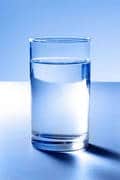We got our filter systems from http://www.psifilters.com.au/. They have a very informative website and they’re very helpful on the phone. The only problem is that you need to arrange for your own plumber to install the system – not a very big problem really…
Whole House Filter System:
A whole house filter system is designed as a point-of-entry system that filters water directly as it enters a home plumbing system. This means the whole house water filter provides clean, filtered water to every water source in the household – every tap, the shower, the washing machine, the dishwasher…
It uses a twin-stage filtration system in which most harmful contaminants are removed from the water supply. The first stage of filtration removes any sediment materials in the water that may clog the chemical filter, reducing its effectiveness. The second stage then uses filtration involving bituminous-activated carbon or/and coconut-shell activated carbon media to filter pesticides, remnants of biological matter, and other harmful chemicals.
By removing chlorine and other harmful chemicals at the point-of-entry, whole house water filters not only provide cleaner, healthier water, but better air quality, as well. They prohibit chlorine from vaporizing in the air when used in the shower and washing machine. Inhaling chlorine vapour is strongly correlated to the onset or aggravation of asthma and bronchitis.
But this system does not remove fluoride from the water. This can only be effectively removed by Reverse Osmosis.
Reverse Osmosis:
Reverse osmosis is a filtration process that is often used for water. It works by using pressure to force a solution through a membrane, retaining the solute (the stuff in the water) on one side and allowing the pure solvent (water) to pass to the other side.
This process is best known for its use in desalination (removing the salt from sea water to get fresh water), but it has also been used to purify fresh water for medical, industrial and domestic applications since the early 1970s.
Such systems typically include a number of steps:
- a sediment filter to trap particles including rust and calcium carbonate
- optionally a second sediment filter with smaller pores
- an activated carbon filter to trap organic chemicals, and chlorine which will attack and degrade reverse osmosis membranes
- a reverse osmosis (RO) filter which is a thin film composite membrane
- optional re-mineralisation cartridge (see below)
- optional storage tank (see below)
- optional re-odouriser (see below)
One problem with the RO process is that it takes out the good with the bad, so the water is stripped from all minerals including natural trace minerals such as calcium, magnesium and makes the water acidic. Several studies have proven that drinking distilled water, stripped of minerals, can actually be harmful to the body system. Long-term consumption of such de-mineralized water can result in mineral deficiencies in the body as it will strip the calcium and magnesium etc from your body. The solution is to add an additional stage after the RO stage which is called ‘re-mineralisation’ which adds calcium and magnesium back into the drinking water to ensure the PH remains neutral at around 7.0
The other inherent problem with RO is that its a slow process, so the under-sink reverse osmosis system has the convenience of delivering water quickly as they have a storage tank and an auto shut-off system that turns the system off when the tank is full. The storage tank can add odour and a slight taste, so to remove this a re-odouriser can be added after the tank, as it flows to the tap.
The RO process does produce ‘waste’ water to make clean drinking water, for example it can take 4 litres to make 1 litre of drinking water. But there are systems (like the one we bought) which are low waste producing, which only use 2 litres to produce 1 litre of drinking water. And in Australia this is quite important!


